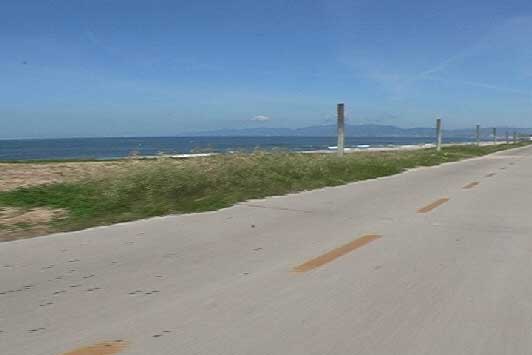
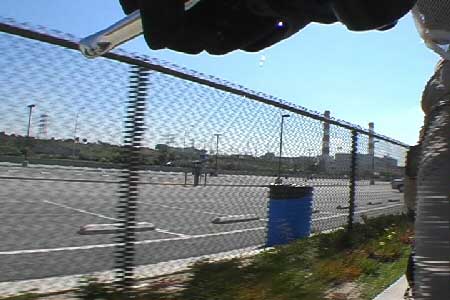
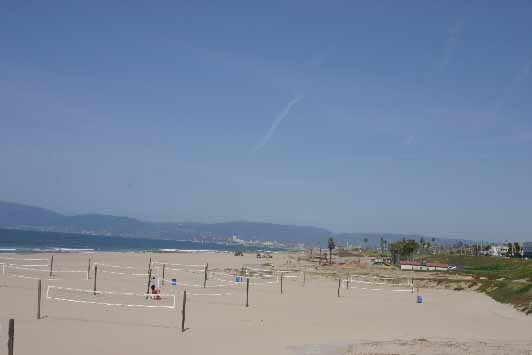

Compare above cloudy-day visit to this late-summer sunny-day visit...
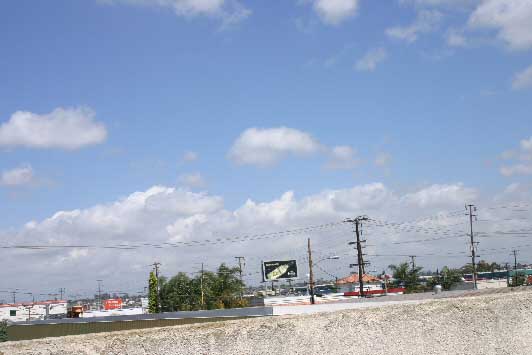
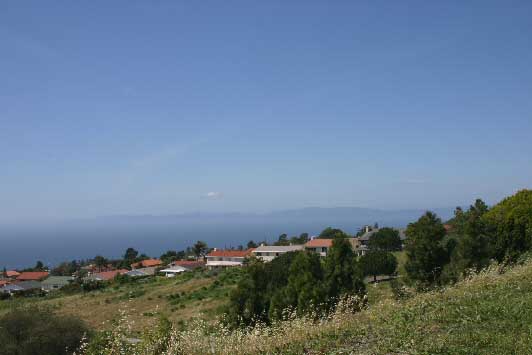
Panobot, introduced earlier, has been improved. See below for details on the mechanical re-design.
| 2005-03-25: El Segundo,
California, beach bike trail: The images below are stills from a minDV
segment. The footage was captured
on a moving bicycle to which was affixed an in-motion panobot. Contact
me for the movie (35 MB, mpeg 2 "DVD-quality" format). A musical
cue accompanies the movie: It is a segment from the track "Budget
Meeting" from Hans Zimmer's 2004 soundtrack
to the film King Arthur. |
 
|
| 2005-03-25: El Segundo, California, off the beach bike trail: The image below is one frame from a panned time-lapse sequence taken near LAX at El Segundo, CA. Approximately 170 images were captured 10-12 seconds apart with the lens at ~ 33 mm (wide-angle). Originally, I wanted to pan a full 180 degrees but lack of time prevented me from doing so. The segments were re-assembled into a *.mov file in Apple QuickTime Pro using 23.97 fps. The video was then converted to mpeg 2, using Ulead VS 8, slightly "upping" the frame rate to video (29.97 fps). Note: Most of the jerkiness is attributable to camera software locking up during the shooting session. The software was reset by cycling power to the camera -- these actions slightly disturbed its position and are noticeable as "jerks" in the movie. There is also some detectable flicker as the camera pans from right to left. Some of this is due to mechanical slop (slack) in the design, the rest (I assume) is due to frame-capture rate (and/or frame-assembly rate). I hope to address some or all of these issues in the next re-engineering effort. |
 |
| 2005-03-26: Malibu Bluffs State Park (facing north-west towards Point Dume), Malibu, California: The image below is one frame from a panned time-lapse sequence. Again, I had issues with the camera's software freezing up, so the intermittent "jerks" noticeable during panned motion are a result of physically disturbing the camera to reset the fault. Here, I rendered in both 23.97 and 29.97 fps; the latter frame rate does seem to smooth the pan. Perhaps a higher frame rate -- combined with reduced interval between frames -- will reduce pan-related flicker to acceptable levels. |
 Compare above cloudy-day visit to this late-summer sunny-day visit... |
| 2005-03-28: On the patio of my second-story home (facing north), Gardena, California: The image below is one frame from a panned time-lapse sequence. Again, I had issues with the camera's software freezing up, so the intermittent "jerks" noticeable during panned motion are a result of physically disturbing the camera to reset the fault. Here, I rendered in 23.97 fps only. Canopus ProCoder Express was used to re-code the QT Pro-created *.mov file into a smaller *.mov file. Throughout the rendering/conversion chain fps was kept at 23.97. |
 |
| 2005-03-29: View from 1000 feet at Fred Hesse Community
Park, Palos Verdes, CA. This 23.97 fps pan, although hand-triggered (i.e.
the shutter) and not very long, is the best panobot-based pan I have
created
to date.
It was very windy at this location at the time of shooting and the camera and
panobot jittered while shooting. However, these disturbances did
not affect the end result. |
 |
Below is an image of a Panobot 2, an improved version of the original Panobot. Much-smoother movement of the drivetrain was achieved by switching from the original chain-driven turntable to a worm-gear-driven design. The image below shows the Panobot being used to rotate a miniDV camera, this one was also mounted to my bike's front pannier rack to achieve a certain visual effect. In other applications, as noted above, it may also be used to pan a still camera for panoramic still photography or panned time-lapse cinematography.
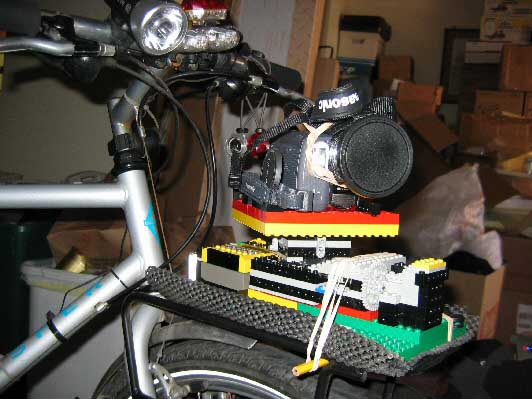 |
On my EOS 300D, I have noted the infamous ERR 99 *randomly* cropping up while using Canon's RS60-E3 remote control. I purchased the EOS 300D in December 2004 from a reputable US dealer (B&H Photo) and have not used it that much. When I do use it, it is with the purpose of creating time-lapse movies; this requires either using either the aforementioned remote or camera-controlling software (e.g. BreezeSystems DSLR Remote Pro).
During my use, ERR 99 seems to occur *only* when using the remote – this is an inference based on specific experiments I conducted to induce ERR 99. That is, for equal number of shots – all with identical camera setting and intervals between shots – my EOS 300D erred only when RS60-E3 was in use. I have not noticed this error when using the *camera’s* shutter release but, alas, this button is not used frequently enough in my experience to make a statistically-valid inference.
Update: ERR 99 occurs only when one repeatedly depresses the trigger on the RS60-E3 remote. My solution: put camera in continuous mode and lock the remote in engaged position. Using this approach for daytime time-lapses, the image-capture (shutter-release) rate averages roughly one frame every four to five seconds -- good enough for government work! For nighttime shots -- for shutter speeds longer than five seconds -- the exposure time is precisely what is selected (e.g. 8, 10, 20 seconds).
California still images and panoramas
Nature Photography: Tips, Techniques and Examples
Astrophotography: Film vs. Digital
Ohio still images and panoramas